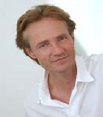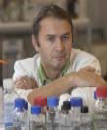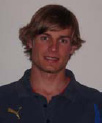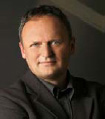|
|
|
| |
| ABSTRACT |
|
Platelet-rich plasma (PRP) has been employed to treat sports injuries to possibly accelerate healing and regeneration. This method offers some potential, especially for athletes. Growth factors are generally prohibited by the World Anti Doping Agency with exception to PRP which may induce adverse effects. The aim of this study was to evaluate any systemic increase of growth factors such as Insulin Like Growth Factor-1, Endothelial Growth Factors, Platelet-Derived Growth Factors, Fibroblast Growth Factors, Vascular-Endothelial Growth Factor and Transforming Growth Factors after local intramuscular administration of PRP in young, healthy male subjects keeping in mind adverse treatment effects. Enriched plasma from centrifuged blood samples was injected into the gluteus muscle. Venous blood was collected and serum prepared before as well as 0.5, 3 and 24 hours after PRP administration. Growth factors were analyzed using ELISA test kits. No significant systemic increase of growth factor levels was found after PRP injection except TGF-β2. For that reason the PRP method may be applied for muscle injury treatment in elite athletes although further studies are necessary to clarify the response to the unspecific increased TGF-β2 blood levels, which could increase the risk for local fibrosis. |
| Key words:
Autologous Conditioned Plasma, blood levels of growth factors, doping, platelet-rich plasma.
|
Key
Points
- Autologous conditioned plasma
- Systemic circulating growth factors
|
Platelet-rich plasma (PRP) preparations are known to contain a series of concentrated cytokines that may be valuable to augment healing of a wide range of tissues (Marx, 2004; Sánchez et al., 2003) such as muscle injuries, osteoarthritis and chronic tendinopathies (Baltzer et al., 2009; Banfi et al., 2006; Creaney and Hamilton, 2008). Studies in animals have shown possible benefits of this therapeutic PRP application (Baltzer et al., 2009; Banfi et al., 2006; Mishra and Pavelko, 2006; Sánchez et al., 2009a; 2009b) and some prospective randomized controlled studies have shown positive effects e.g. in augmenting rotator cuff repairs (Castricini et al., 2011) or for the treatment of lateral epicondylitis (Peerbooms et al., 2010). Despite its positive effects, concerns have been raised particularly regarding undesirable side effects such as fibrosis or infection (Engebretsen et al., 2010; Leroith and Roberts, 2003; Sampson, et al., 2008; Wright-Carpenter et al., 2004). This method may be particularly interesting for elite athletes as there is enormous revenue generating potential connected with most famous sports and pressing demands are placed on the treating physician expecting them to facilitate a rapid return to competition. PRP method and its applicationPRP can be defined as plasma containing a concentration of platelets that is above the concentration found in whole blood (Marx, 2004). Platelets contain a number of proteins, cytokines, and other bioactive factors that initiate and regulate basic aspects of wound healing. Platelet-rich plasma, with a platelet concentration of at least 1 Mio platelets/µL, is very likely associated with the enhancement of healing. Platelet-rich plasma contains up to 4 times the concentration of platelets found in whole blood depending on the preparation. (Table 1) The basic cytokines identified in platelets include the transforming growth factor-β (TGF-β), platelet-derived growth factor (PDGF), insulin-like growth factor (IGF-I), fibroblast growth factor (FGF), epidermal growth factor, vascular endothelial growth factor (VEGF), and endothelial cell growth factor. Endocrine factors including growth hormones and circulating mature insulin-like growth factors (IGF-1) have an effect on many tissues in the human body. These cytokines mainly play important roles in cell proliferation, chemotaxis, cell differentiation, and angiogenesis (Table 2). TGF-β is found in at least five isoforms, (TGF-β1-5), TGF-β1 is the prevalent form, being almost ubiquitously present. TGF-β1 is active during inflammation, influences the regulation of cellular migration and proliferation and stimulates cell replication and fibronectin binding interactions. It is also strongly involved in collagen synthesis and promotes the production of the extracellular matrix (Table 2) (Anitua et al., 2005). TGF-β is also expressed by regenerating muscle tissue following trauma, suggesting that it may play a role in muscle regeneration. This may occur as a consequence of its effect on the reconstruction of the basement membrane and the extracellular matrix surrounding the damaged myofibres and the activated satellite cells. However, an excessive deposition of extracellular matrix leads to fibrosis (Sampson et al., 2008). It has been demonstrated that measures that can alter the effect of TGF-β1 on its receptors may affect the fibrotic process (Anitua et al., 2009; Chan et al., 2005; Kjaer and Bayer, 2011). TGF-β1-5 is all involved in this process, although the specific nature of the isoforms is not yet clear. TGF-β has been studied extensively in ocular disease. TGF-β1, -β2, and -β3 appear to have similar actions in vivo and all TGF-β isoforms are suggested to be potent modulators which stimulate the conjunctival scarring response (Cordeiro et al., 2000; Cordeiro et al., 1999). These studies indicate that TGF-β2 may naturally modify the antiscarring effects of antimetabolites in glaucoma filtration surgery (Cordeiro et al., 1999; 2000). Despite the possible beneficial effects of PRP, several concerns have been raised about undesireable side effects (Marx, 2004; Creaney and Hamilton, 2008). IGF-1 requires some special attention because of its potential doping effects (Tentori and Graziani, 2007). Up until now there has been a suspicion, but no compelling evidence, of systemic effects resulting from locally administered injections of PRP, yet very few studies have addressed this issue (Banfi et al., 2006; Borselli et al., 2010). We hypothesized that an intramuscular PRP application should increase relevant growth factors systemically, which are related to possible adverse side effects for local tissue repair. The aim of this study is to investigate possible systemic effects of PRP applied intramuscularly on various serum growth factor levels in healthy subjects to rule out potential risks for adverse local tissue repair.
Ten 23 ± 1.5 year old, healthy, athletic male subjects (VO2max: 52.0 ± 11.1 ml.kg-1.min-1; body mass: 78.7 ± 9.3 kg, height 1.84 ± 0.08 m) were studied. Written informed consent was obtained from the subjects. The study was approved by the local ethics committee (No.: 21-160ex 09/10). We used a PRP system called ACP manufactured by Arthrex®. The Autologous Conditioned Plasma (ACP) system is designed to extract platelet concentrate solution from a patient’s own peripheral blood. The system has a specially designed and patented double syringe and eliminates a second centrifugation step, making it easy to use. Prior to taking blood, 1ml of ACD-A (Anticoagulant Citrate Dextrose Solution, NoClot 400™, Cytosol Laboratories, INC) was withdrawn into the outer syringe of an ACP Doublesyringe system (by Arthrex®). Then 9 ml of venous blood was withdrawn with a butterfly cannula from the cubital vein. Blood was spun at 1500 rpm for 5 minutes (Hettich Rotofix 32A) to separate plasma from erythrocytes and leukocytes. After separation the plasma was transferred into the smaller syringe. 2.5 ml of the autologous conditioned plasma (ACP) was then injected into the right gluteus maximus of each subject. This application was performed within a clinical setting while conforming to proscribed standards. Venous blood samples were drawn and serum was prepared before ACP administration after 30 minutes, 3 hours and 24 hours respectively, to determine IGF-1, PDGF-AB, PDGF-BB, TGF-β1, TGF-β2, VEGF, EGF and FGF levels. Samples were stored at -80 °C until further processing. Subjects were requested to abstain from any strenuous physical activity before the first blood draw and throughout the observation period. All parameters were measured in serum using the R&D Quantikine ELISA testkits (Biomedica, Vienna, Austria) for human IGF-1, PDGF-AB, PDGF-BB, TGF-β1, TGF-β2, VEGF, EGF and FGF following the manufacturer’s instructions. In brief, samples were thawed and adequately diluted. Standards and samples were added to microplates precoated with a specific monoclonal antibody. After washing, bound growth factors were detected by a specific polyclonal antibody linked with horseradish peroxidase. After washing, substrate hydrogen peroxide and a colour reagent tetramethylbenzidin were added. Absorption was then measured at 450 nm after incubation. Quantitation was performed using the calibration curve obtained by adhering to proscribed standards. Each sample and standard was measured in duplicate. Statistical analysesMeasures are reported as means (± SD). Comparisons between pre- and postbioactive factor levels were performed by means of repeated measures ANOVA. A p-value < 0.05 was considered to be significant. The required sample size of 10 subjects was calculated a-priori by G*Power analysis using an assumed large effect size of 0.4 (Cohen, 1988), and α-level of 0.05 and a power of 0.8 to simulate a meaningful elevation of the main variable above mean values (Faul et al., 2007).
No systemic increase of the growth factors IGF-1, PDGF-AB, PDGF-BB, FGF, VEGF, EGF-1 and TGF-β1 was found (Figure 1A-G), but TGF-β2 significantly increased 3 and 24 hours after administration (Figure 1H). The increase was found in all subjects and the mean TGF-β2 after 24 hours was three times the value compared to resting conditions (Figure 1H). IGF-1 was found at the lower limit of age related norms (Brabant et al., 2003) and the application of ACP did not influence the mean IGF-1 values after 30 minutes, 3 and 24 hours as presented previously (Figure 1A)(Schippinger et al., 2011). Several studies have suggested that PRP may be advantageous in sports medicine, but up until now, the majority of human studies that support this hypothesis are either small case series or level 4 and 5 studies, which demonstrate the efficacy of PRP/ACP in treating tendinopathies (Foster et al., 2009; Mishra and Pavelko, 2006; Peerbooms et al., 2010; Sánchez et al. 2009a; 2009b). In a preliminary analysis, intramuscular administration of PRP - in our study ACP - in young, healthy, athletic subjects had no effect on circulating IGF-1 values (Schippinger et al., 2011). Additionally, the growth factors PDGF-AB, PDGF-BB, TGF-β1, VEGF, EGF and FGF showed no significant systemic increase after a single intramuscular ACP administration (Figure 1A-G). However, we cannot rule out a possible effect due to the small sample size tested and not using a control group with a sham application. TGF-β2, a nonspecific growth factor involved in several growth processes in healing and wound repair (Borrione et al., 2010; Borselli et al., 2010; Cordeiro et al., 1999; Mc Pherron and Lee, 1997; Philippou et al., 2007), showed a significant increase over time (Figure 1H). Some researchers have raised concerns that PRP derivatives could induce a fibrotic healing response in local muscle tissues (Chan et al., 2005; Smith et al., 2007). This theoretical deleterious side effect of PRP is based on the local elevation of TGF-β levels after injection into muscle tissue. Basic science studies have demonstrated that platelet granules can release TGF-β when stimulated. TGF-β has also been shown to stimulate fibrosis in in-vitro muscle tissue studies. It was hypothesized that fibrotic healing following muscular injury can lead to an increased incidence of re-injury (Chan et al., 2005). Creany and Hamilton (2008) mentioned potential local complications of using growth factors such as excessive fibrosis in the healing muscle. They argue that complete muscle regeneration cannot occur in the presence of fibrosis. A key regulator noticed was TGF-β1 which has been suggested to regulate the balance between regeneration and fibrosis. In our study TGF-β1 did not change significantly on a systemic level (Figure 1G) but a local effect cannot be ruled out. The role of TGF-β2 in local tissue repair, significantly elevated in our study has to be ruled out in additional studies. McLennan and Koishi (2002) described various effects of TGF-β concluding that TGF-β2 regulates the fusion of myoblasts to myotubes and motoneuron survival. TGF-β has been studied extensively in ocular disease. TGF-β1, -β2, and -β3 appear to have similar actions in vivo and all TGF-β isoforms are suggested to be potent modulators which stimulate the conjunctival scarring response (Cordeiro et al., 1999; 2000). These studies indicate that TGF-β2 may naturally modify the antiscarring effects of antimetabolites in glaucoma filtration surgery (Cordeiro et al., 1999; 2000). Limits of the study are a low number of subjects and that a non control sham application was performed. It might be possible that the injection itself may induce local effects on TGF-β which may also be seen at the systemic level. From our results we can conclude that a single intramuscular administration of ACP, a PRP preparation by Arthrex® does not significantly increase main systemic growth factor levels, except for the unspecific transforming growth factor TGF-β2. For this reason, the PRP method e.g. intended for the treatment of muscle injuries may be applied for injury treatment, although further randomized controlled studies are necessary to clarify the local response of the unspecific increased TGF-β2 levels in the blood circulation which may possibly increase the risk of fibrosis.
| ACKNOWLEDGEMENTS |
Each author certifies that he has no commercial associations (e.g. consultancies, stock ownership, equity interest, patient/licensing arrangements, etc.) that might pose a conflict of interest in connection with the submitted paper. This study was supported by Arthrex which is a company that markets a system for preparing PRP (ACP) for therapeutic use. |
|
| AUTHOR BIOGRAPHY |
|
 |
Gert Schippinger |
| Employment: Professor at Human Performance Research , University Graz, Private practice for trauma and orthopaedic surgery “Sportchirurgieplus” |
| Degree: MD, PhD |
| Research interests: Oxidative stress, sports injury and biological treatment options, arthroscopic surgery |
| E-mail: gert@schippinger.com |
| |
 |
Florian Fankhauser |
| Employment: Private practice for trauma and orthopaedic surgery “Sportchirurgieplus”. Lecturer for physiotherapy at FH Joanneum Graz |
| Degree: MD, PhD |
| Research interests: Oxidative stress, sports injury, arthroscopic surgery |
| E-mail: florian.fankhauser@sportchirurgieplus.at |
| |
 |
Karl Oettl |
| Employment: Associate professor for physiological chemistry at the Institute for Physiological Chemistry, Medical University of Graz |
| Degree: Dr. rer.nat. |
| Research interests: Oxidative stress in exercise and disease, albumin chemistry and function in liver disease, analytics of physiologically and clinically relevant compounds |
| E-mail: karl.oettl@medunigraz.at |
| |
 |
Stefan Spirk |
| Employment: Student Assistant at Human Performance Research , University Graz, Student of Sport Science, Institute of Sport Science University of Graz |
| Degree: BSc |
| Research interests: Sports injury, performance diagnostics and training |
| E-mail: s.spirk@uni-graz.at |
| |
 |
Peter Hofmann |
| Employment: Professor at Human Performance Research , and Institute of Sports Science, University of Graz |
| Degree: Dr. rer.nat. |
| Research interests: Exercise testing and performance diagnostics, exercise prescription and training |
| E-mail: peter.hofmann@uni-graz.at |
| |
|
| |
| REFERENCES |
 Anitua E., Andía I., Sanchez M., Azofra J., Del Mar Zalduendo M., De La Fuente M., Nurden P., Nurden A.T. (2005) Autologous preparations rich in growth factors promote proliferation and induce VEGF and HGF production by human tendon cells in culture. Journal of Orthopaedic Research 23, 281-286. |
 Anitua E., Sanchez M., Zalduendo M.M., De La Fuente M., Prado R., Orive G., Andia I. (2009) Fibroblastic response to treatment with different preparations rich in growth factors. Cell Proliferation 42, 162-170. |
 Arsic N., Zacchigna S., Zentilin L., Ramirez-Correa G., Pattarini L., Salvi A., Sinagra G., Giacca M. (2004) Vascular endothelial growth factor stimulates skeletal muscle regeneration in vivo. Molecular Therapy 10, 844-854. |
 Bachl N., Derman W., Engebretsen L., Goldspink G., Kinzlbauer M., Tschan H., Volpi P., Venter D., Wessner B. (2009) Therapeutic use of growth factors in the musculoskeletal system in sports-related injuries. The Journal of Sports Medicine and Physical Fitness 49, 346-357. |
 Baltzer A., Moser C., Jansen S.A., Krauspe R. (2009) Autologous conditioned serum (Orthokine) is an effective treatment for knee osteoarthritis. Osteoarthritis Cartilage 17, 152-160. |
 Banfi G., Corsi M.M., Volpi P. (2006) Could platelet rich plasma have effects on systemic circulating growth factors and cytokine release in orthopaedic applications?. British Journal of Sports Medicine 40, 816-. |
 Borrione P., Gianfrancesco A.D., Pereira M.T., Pigozzi F. (2010) Platelet-rich plasma in muscle healing. American Journal of Physical Medicine & Rehabilitation 89, 854-861. |
 Brabant G., Von Zur Mühlen A., Wüster C., Ranke M.B., Kratzsch J., Kiess W., Ketelslegers J.M., Wilhelmsen L., Hulthén L., Saller B., Mattsson A., Wilde J., Schemer R., Kann P. (2003) Serum insulin like Growth Factor 1 Reference Values for an Automated Chemiluminescence Immunoassay System: Results from a Multicenter Study. Hormone Research 660, 53-60. |
 Castricini R., Longo U.G., De Benedetto M., Panfoli N., Pirani P., Zini R., Maffulli N., Denaro V. (2011) Platelet-rich plasma augmentation for arthroscopic rotator cuff repair: a randomized controlled trial. The American Journal of Sports Medicine 339, 258-265. |
 Chan Y.S., Li Y., Foster W., Fu F.H., Huard J. (2005) The use of suramin, an antifibrotic agent, to improve muscle recovery after strain injury. The American Journal of Sports Medicine 33, 43-51. |
 Cohen J (1988) Statistical Power Analysis for the Behavioral Sciences. Lawrence Erlbaum Associates. |
 Cordeiro M.F., Bhattacharya S.S., Schultz G.S., Khaw P.T. (2000) TGF-beta1, -beta2, and -beta3 in vitro: biphasic effects on Tenon's fibroblast contraction, proliferation, and migration. Investigative Ophthalmology & Visual Science 441, 756-763. |
 Cordeiro M.F., Reichel M.B., Gay J.A., D'esposita F., Alexander R.A., Khaw P.T. (1999) Transforming growth factor-beta1, -beta2, and -beta3 in vivo: effects on normal and mitomycin C-modulated conjunctival scarring. Investigative Ophthalmology & Visual Science 440, 1975-1982. |
 Creaney L., Hamilton B. (2008) Growth factor delivery methods in the management of sports injuries: the state of play. British journal of Sports Medicine 442, -. |
 Engebretsen L.S.K., Alsousou J, Anitua E, Bachl N, Devilee R, Everts P, Hamilton B, Huard J, Jenoure P, Kelberine F, Kon E, Maffulli N, Matheson G, Mei-Dan O, Menetrey J, Philippon M, Randelli P, Schamasch P, Schwellnus M, Vernec A., Verrall G (2010) IOC consensus paper on the use of platelet-rich plasma in sports medicine. British Journal of Sports Medicine 444, 1072-1081. |
 Eppley B., Woodell J.E., Higgins J. (2004) Platelet quantification and growth factor analysis from platelet-rich plasma: implications for wound healing. Plastic and Reconstructive Surgery 1114, 1502-1508. |
 Everts P.A., Knape J.T., Weibrich G., Schonberger J.P., Hoffmann J., Overdevest E.P., Box H.A., Van Zundert A. (2006) Platelet-rich plasma and platelet gel: a review. The Journal of Extra-Corporeal Technology 38, 174-187. |
 Faul F., Erdfelder E., Lang A.G., Buchner A. (2007) G*Power 3 : A flexible statistical power analysis program for the social, behavioral, and biomedical sciences. Behavior Research Methods 339, 175-191. |
 Foster T., Puskas B.L., Mandelbaum B.R., Gerhardt M.B., Rodeo S.A. (2009) Platelet-rich plasma: from basic science to clinical applications. The American Journal of Sports Medicine 337, 2259-2272. |
 Hsu C., Chang J. (2004) Clinical implications of growth factors in flexor tendon wound healing. The Journal of Hand Surgery 229, 551-563. |
 Husmann I., Soulet L., Gautron J., Martelly I., Barritault D. (1996) Growth factors in skeletal muscle regeneration. Cytokine & Growth Factor Reviews 77, 249-258. |
 Kjaer M., Bayer M. (2011) The use of platelet-rich plasma in sports medicine: a quick fix or medical doctors on shaky ethical ground?. Scandinavian Journal of Medicine & Science in Sports 221, 493-495. |
 Klein M.B., Yalamanchi N., Pham H., Longaker M.T., Chang J. (2002) Flexor tendon healing in vitro: effects of TGF-beta on tendon cell collagen production. The Journal of Hand Surgery 227, 615-620. |
 Kovacevic D., Fox A.J., Bedi A., Ying L., Deng X.H., Warren R.F., Rodeo S.A. (2011) Calcium-phosphate matrix with or without TGF-beta3 improves tendon-bone healing after rotator cuff repair. The American Journal of Sports Medicine 339, 811-819. |
 Leroith D., Roberts C.T. (2003) The Insulin-like growth factor system and cancer. Cancer Letters 1195, 127-137. |
 Marx R. (2004) Platelet-rich plasma: evidence to support its use. Journal of Oral and Maxillofacial Surgery 62, 489-496. |
 McLennan I.S., Koishi K. (2002) The transforming growth factor-betas: multifaceted regulators of the development and maintenance of skeletal muscles, motoneurons and Schwann cells. The International Journal of Developmental Biology 446, 559-567. |
 Mishra A., Pavelko T. (2006) Treatment of chronic elbow tendinosis with buffered platetelet-rich plasma. The American Journal of Sports Medicine 334, 1774-1778. |
 Molloy T., Wang Y., Murrell G. (2003) The roles of growth factors in tendon and ligament healing. SportsMedicine 333, 381-394. |
 Peerbooms J.C., Sluimer J., Bruijn D.J., Gosens T. (2010) Positive effect of an autologous platelet concentrate in lateral epicondylitis in a double-blind randomized controlled trial: platelet-rich plasma versus corticosteroid injection with a 1-year follow-up. The American Journal of Sports Medicine 338, 255-262. |
 Philippou A., Maridaki M., Halapas A., Koutsilieris M. (2007) The role of the insulin-like growth factor 1 (IGF-1) in skeletal muscle physiology. In Vivo 21, 45-54. |
 Pryce B.A., Watson S.S., Murchison N.D., Staverosky J.A., Dunker N., Schweitzer R. (2009) Recruitment and maintenance of tendon progenitors by TGFbeta signaling are essential for tendon formation. Development 136, 1351-1361. |
 Sampson S., Gerhardt M., Mandelbaum B. (2008) Platelet rich plasma injection grafts for musculoskeletal injuries: a review. Current Reviews in Musculoskeletal Medicine 11, 165-174. |
 Sánchez M., Anitua E., Cugat R., Azofra J., Guadilla J., Seijas R., Andia I. (2009a) Nonunions treated with autologous preparation rich in growth factors. Journal of Orthopaedic Trauma 223, 52-59. |
 Sánchez M., Anitua E., Orive G., Mujika I., Andia I. (2009b) Platelet-Rich Therapies in the Treatment of Orthopaedic Sport Injuries. Sports Medicine 339, 345-354. |
 Schippinger G., Fankhauser F., Spirk S., Domej W., Hofmann P. (2011) Influence of intramuscular application of autologous conditioned plasma on systemic circulating IGF-1. Journal of Sports Science and Medicine 10, 439-444. |
 Smith C.A., Stauber F., Waters C., Alway S.E., Stauber W.T. (2007) Transforming growth factor-beta following skeletal muscle strain injury in rats. Journal of Applied Physiology 1102, 755-761. |
 Tentori L., Graziani G. (2007) Doping with growth hormone/IGF-1, anabolic steroids or erythropoietin: is there a risk?. Pharmacological Research 55, 359-369. |
 Wright-Carpenter T., Opolon P., Appell H.J., Meijer H., Wehling P., Mir L.M. (2004) Treatment of muscle injuries by local administration of autologous conditioned serum: animal experiments using a muscle contusion model. International Journal of Sports Medicine 225, 582-587. |
|
| |
|
|
|
|

